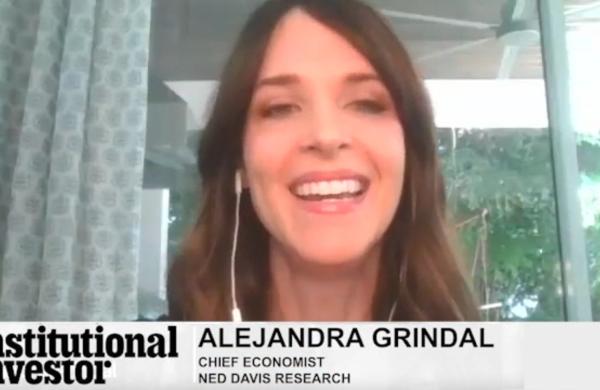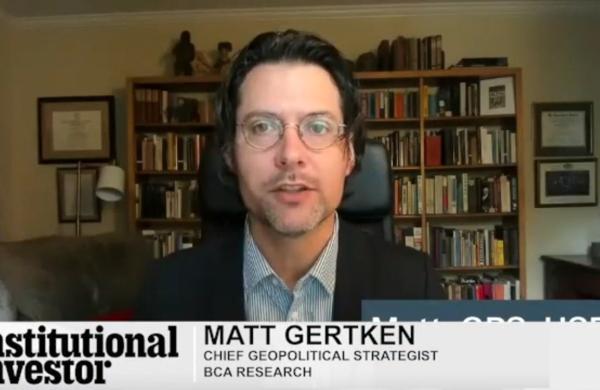With its serene gardens and elegant décor, the Ditchley Park manor in the Oxfordshire countryside offers a seductive hint of the splendor of England's bygone landed gentry. For some three dozen traders and asset managers who gathered there recently, however, the topic was modern and distinctly unrelaxing. These experts debated the outlook for the key macro drivers — ranging from U.S. deficits to the fate of the euro to the risks of a Middle East conflagration — that will make or lose them money. Their conclusions were hardly reassuring.
"Is your Ditchley Park consensus now the conventional wisdom?" a London-based trader asked me rhetorically over a glass of champagne as we looked up at a portrait of the 2nd Earl of Litchfield, who built the country manor in 1722. "If you believe in rational markets, then the odds of these drivers are already baked into asset prices." He took another sip. "So if I'm going to make any serious money this year, I'm going to have to figure out which of these conventional wisdom drivers is wrong and then bet big the other way."
And bet big they do. By my back of the envelope calculation, the traders seated around Ditchley's elegant library collectively manage about $100 billion of assets in the global macro market segment. If you add in the assets of the portfolio managers and banks represented by the other participants, there was $3.5 trillion of AuM in the room; in other words, a whole lot of skin in the game.
For two years now, I've been surveying traders' views about these global macro drivers at roughly six-month intervals, and seeing how their predictions compare with actual events. In the latest exercise, which took place in the lovely month of May, before the recent market turmoil over the winding down of the Federal Reserve's quantitative easing, I convened a group of financial professionals — most of them traders at global macro hedge funds — in Oxfordshire for two days. Unlike journalists or consultants (or even former intelligence analysts like myself), traders need to get political forecasts right, and they have a lot of models and research at their disposal. As Institutional Investor readers know, I've been mining this seam about political forecasting by traders for almost a decade, beginning in my days at the Central Intelligence Agency in the mid-2000s and now back at Princeton University.
These are the five big macro drivers: Will the euro zone muddle through on the basis of Mario Draghi's Outright Monetary Transactions? Will China have an economic soft landing? Will Democrats and Republicans agree on a fiscal bargain? Will the Civil War in Syria spill over into the Middle East at large and drive Brent crude back above $100 a barrel? And, since a lot of traders have a skeptical eye on Abenomics, having made and then lost a lot of money on the Nikkei's bump and drop, will Shinzo Abe and Haruhiko Kuroda succeed in reflating Japan and kindling growth again?
This year, we also pondered the nasty security events that can move asset markets, the ugly stuff that disturbs the sleep of risk managers. I polled a dozen former diplomats, soldiers and spies for what they considered to be the top 10 security events that could materialize this year, events with a real whiplash potential, and then polled the traders for their expectations. Strikingly, the traders and asset managers assigned higher odds — in some cases twice as high — of these events taking place within 2013 than the policy wonks did.
Here is the bad dream list: Will the United States or Israel strike Iran's nuclear facilities? Will the Turks and the Israelis clash over the bonanza of newly discovered offshore gas fields in the Eastern Mediterranean? Will there be a crisis between India and Pakistan that ends in a nuclear mushroom cloud? Will the belligerent North Koreans pull off another military provocation? Will there be another clash between China and its neighbors in one of those disputed areas in the eastern Pacific or the South China Sea, a clash involving the loss of ships or planes and more than 25 casualties?
Those six are the most ominous traditional security events to worry about, clashes between states and their armies. But there are four other ugly things that can roil markets, crises that don't emanate from decisions made in capitals. Will there be a major terrorist incident in Europe or North America causing more than 100 deaths? Will there be a major cyber attack in Europe or North America costing somebody at least half a billion dollars? Will there be a major pandemic across more than one border in 2013? Given the rising fatality count from the lethal corona virus that's been spreading from Dubai, a major pandemic means at least 1,000 deaths. And finally, will there be major political unrest — defined as a lot of property damage and more than 100 casualties — in at least one European Union member state?
The way traders think about global macro drivers have been morphing in interesting ways over the past two years. Sometimes the target value range widens or narrows; sometimes the important indicator of a deep driver, the market outcome the trades turn on, get redefined. Regarding the big four drivers — the U.S., China, the euro zone and Middle East energy, which appear in every global macro strategy — I detect a distinct trend in how the traders view these outcomes.
Over the last 24 months, the average trader has shown steadily decreasing confidence in the ability of the U.S. Congress and President Obama to come to any fiscal bargain. Their falling confidence in fiscal rectitude has been almost exactly offset by increasing confidence that they are facing open-ended quantitative expansion,"QE-OE" in trader-speak, until unemployment drops to politically acceptable levels. (The recent selloff that followed hints of an early end to QE by Fed Chairman Ben Bernanke showed just how hooked the markets are on the central bank's liquidity.)
Their confidence in the abilities of the Chinese leadership to pull off a soft landing has gone in the other direction, a slow rise in confidence after a dip at the beginning of 2012. Interestingly, the average macro trader has also grown increasingly confident in the ability of the euro zone to muddle through without losing any of the peripheral members, thanks to the European Central Bank. Similarly, after initial nervousness that the Arab Spring might turn ugly for oil early in 2012, the political risk premium on the oil price has dissipated.
Institutional Investor queried its readership with an on-line poll using the same questions as our Ditchley Park event. Strikingly, the average odds assigned to the deep drivers by both groups were close, differing by low single digits (4.8 percentage points to be exact). II readers assigned significantly higher odds to the bad news security events occurring within 2013 than did the Ditchley crew, however, scoring the likelihood 14 percentage points higher on average.
The event with the highest forecast probability is a major cyber attack in Europe or North America, with odds of 29 percent and a standard deviation of 18. One trader assigned a likelihood of 75 percent to this event.
These high (to me) odds may have been primed by the news media. As Daniel Kahneman observed in his 2011 book, Thinking, Fast and Slow, "People tend to assess the relative importance of issues by the ease with which they are retrieved from memory — and this is largely determined by the extent of coverage in the media. Frequently mentioned topics populate the mind even as others slip away from awareness. In turn, what the media choose to report corresponds to their view of what is currently on the public's mind."
Chinese hacking has been much in the news lately. Several of the Ditchley participants were aware of the Mandiant Corp. study, "APT1: Exposing One of China's Cyber Espionage Units," a brilliant job of open-source intelligence that managed to track down the identities of two of the PLA-supported hackers, including Wang Dong, a.k.a. "Ugly Gorilla." Several participants were aware of the so-called Shamoon virus that hit the Saudi Arabian Oil Co. and Qatar's RasGas Co. last fall. Shamoon looked like malware similar to the Stuxnet virus that attacked Iran's nuclear facilities; it employed some of the same software techniques to damage the programmable logic controllers that are used to run industrial facilities. And the Securities Industry and Financial Markets Association has been running a series of Wall Street cyber disruption exercises called, colorfully, Quantum Dawn, which raised hackles about hackers.
"Whatever It Takes" or a Polite Fraud?
For two years, the majority of this group has bet that the euro zone will muddle through rather than break-up: 53 percent held that view in mid-2011 and end-2011, rising to 65 percent in mid-2012 and to 78 percent at Ditchley. In line with this increasing average confidence, the dispersion has fallen as well from a standard deviation of 25 in 2011 to 19 in each successive poll. The II poll assigned a similarly high probability of 76 percent that the euro zone would muddle through in 2013.
Eurozone Ring-Fence
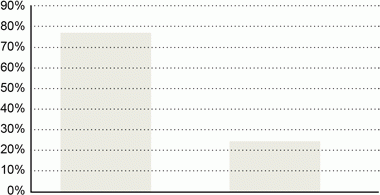
within CY 2013
Traders put a lot of faith in the ECB's willingness to "do whatever it takes" and very little faith in the ability of national governments to adopt either fiscal austerity or structural reform — a pattern of confidence similar to their take on the Federal Reserve and the U.S. government.
"The ECB's Outright Monetary Transactions have saved the euro zone from the brink of disaster, but this also slowed down progress on institution-building, including progress toward forming a banking union," says Wolfango Piccoli, managing director of Teneo U.K., a political and economic consultancy, based in London. (The author is CEO of Teneo Intelligence.) "The success of the OMT program combined with declining sovereign yields has curbed the incentives for member states to move forward on structural progress and has created a feeling of complacency."
The next test of integration is the so-called Single Supervisory Mechanism, or SSM in euro-speak, which will establish the ECB as the lead banking supervisor for the euro area. The Germans are slowing this down, delaying approval of the SSM until after the country's September parliamentary elections, says one participant.
"The slowing progress on further integration has revealed that there are fundamentally different visions of European institutions, mainly between France and Germany," says Peter Spiegel, Brussels correspondent for the Financial Times. "These differences go beyond personalities, despite the consensus view that friction is a result of a personal clash between Merkel and Hollande. Fundamentally, the Germans want more integration achieved by relinquishing sovereignty to the center, while the French want more solidarity without necessarily giving away sovereignty."
German politics are likely to slow integration, including the SSM, but not reverse it. "For the September elections in Germany, each of the main parties remains committed to supporting bailouts but demanding structural reform in return," says Spiegel. "A grand coalition under Merkel is the most likely outcome following the elections, but even a Red-Green coalition would not significantly change course on the euro zone."
"Absent market pressure, the EU's ability to push ahead on plans for a bank resolution mechanism is limited," cautions Teneo's Piccoli, referring to another key element of the euro zone's proposed banking union. "Because of the German election cycle, domestic pressure in Italy and Spain, and different visions of European integration between Berlin and Paris, my view is that continued EU integration will be slow and incremental. Further integration will eventually be achieved, but the outcomes will be less ambitious than currently believed and will disappoint financial markets."
Disappoint markets enough to whiplash bond yields and cause another crisis? The average Ditchley bet is no; a mere one of five believe the darker scenario.
But the pessimistic minority believes that OMT is "a polite fraud," in one trader's view. "The financial markets still believe that the long-tail systemic risk has been addressed by Mario Draghi's commitment to do whatever needs to be done as well as the fact that EU officials recognize they face a problem," says one New York-based macro trader. "If you really believe that, then you should be buying European bank debt out one to three years. Personally, I'm doing the opposite and buying protection on bank debt. I think there is a credible and substantial risk that Draghi loses credibility. The market is not recognizing that the ECB has not really accomplished anything so far. So I'm buying credit default swaps on all the European banks, especially French banks, which are a real basket case."
A London-based portfolio manager agrees with this skeptical take. "In the absence of bond market pressure, European politics could easily just muddle along," this fund manager says. "For now, investors are voluntarily funding EU imbalances. This is why the Germans can currently afford to walk back what they said previously regarding banking integration and bailouts when Italian and Spanish bond yields were above 7 percent. A new crisis will come, however, once the market stops underwriting these current European imbalances."
Our traders believed that a new crisis isn't necessary to trigger a security event of major riots in an EU member state; the current trajectory of austerity alone presents that risk. The mean value assigned to this security event by our traders was 25 percent in 2013 (standard deviation of 19). The Institutional Investor readership thought it even more likely at 40 percent.
No Grand Bargain, but a Greater Fool
In the middle of 2011, the average bet was two out of three that Washington would hammer out a fiscal compromise. A year later, those odds had dropped to slightly better than even, at 55 percent, albeit with a rather large uncertainty distribution standard deviation of 21. By spring 2013, the odds assigned to a "grand bargain," as some called it, had fallen to one out of three, at 35 percent, with an even smaller distribution standard deviation of just 15. The II poll came out almost exactly the same, with average predicted odds of a fiscal grand bargain between the White House and Congress at just 34 percent.
Part of this increasing pessimism is due to the media spectacle of Republicans and Democrats jousting over sequestration, accompanied by a Greek chorus of doom about the drastic effects of going over a fiscal cliff in the absence of a bargain. Two of my favorite Republican senators warned that defense cutbacks would imperil our national security. Yes, the Obama administration tweaked the public by halting visitor tours of the White House (big donors excepted, of course) and allowed flight delays to pile up as air traffic controllers were furloughed; that tactic went nowhere, though, as Congress quickly voted to restore funding to keep the planes moving. The world did not end when sequestration cut in. In fact, it worked so well that the deficit is shrinking fast and the deadline for raising the debt ceiling has receded from early summer to sometime this autumn. But come it will, and neither the administration's budget bean counters nor the Congressional Republicans are in a compromising mood.
No surprise, the Tea Party aficionados on Capitol Hill are even less moved by Christine Lagarde's finger-wagging. "The sequester cuts not only reduced growth in the short term, but they also hurt the most vulnerable and they produce very undesirable effects in that regard," said the IMF chief, as the fund released its Article IV consultation with Jacob Lew's Treasury on June 14. She also chided Congress to "expeditiously raise the debt ceiling so as not to complicate further the situation and avoid yet another lengthy and unnecessarily debate about the debt ceiling."
"Thanks a lot, Madame Lagarde," tweeted a Senate staffer friend of mine right after the IMF press conference. "I'll run that fiscal advice right down to Mitch McConnell and John Boehner."
U.S. Fiscal Compromise
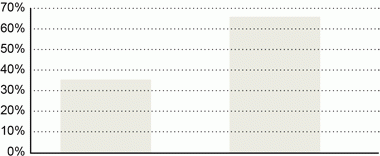
The flip side of traders' skepticism about fiscal compromise by Washington is a grudging acceptance of very long term dovish easy monetary policy by the Fed. According to Tom McGlade, portfolio manager at Prologue Capital, "In 2010, the Fed began to emphasize the employment component of their dual mandate. In my view though, the Fed isn't really targeting employment but instead is targeting GDP growth through the unemployment rate. Bernanke has displayed a stubborn and single-minded view that ultra easy monetary policy involving zero short rates and balance sheet expansion is necessary to support the economy until it displays his ephemeral 'escape velocity.' He believes that any distortions created by his policy are outweighed by its benefits. He has made clear that he would love to have more support from fiscal policy to achieve his goals, but the obvious dysfunction in Washington has left the Fed to fight the battle alone."
Lagarde had some advice for Ben Bernanke, too. "Unwinding monetary policy accommodation is likely to present challenges, including for financial stability," she said, in one of the biggest understatements of the year. Our traders are divided on whether the Federal Reserve is being guided brilliantly or recklessly by my former economics professor. But they all agree with Lagarde that whatever the Fed does will move financial markets up and down dramatically, and they fear being on the wrong end of Fed policy and an asset bubble.
"Using their policy tools and massive balance sheet, the Fed alone sets interest rates now in both the short and the long end. They can buy all the bonds they want at historically and rationally elevated prices. Their demand is inelastic as to price and they don't care about nominal losses. That makes a very dangerous 'greater fool' against which it is inadvisable to fight," says McGlade. "The distortion by the Fed of the risk free rate to irrationally low levels drives up prices of all other asset classes through the portfolio balance channel, extending the influence of this 'greater fool' well beyond the bond market."
But what Ben giveth Ben can taketh away, as one trader observed. The vague musings of the Fed chairman at a Congressional hearing can move asset markets in minutes as the world looks for a hint of reduction in the Fed's monthly $85 billion of asset purchases. Indeed, the chairman's May 22 statement hinting at a tapering of QE, backed up by similar comments after the FOMC meeting on June 19, knocked global equity markets sharply lower and drove Treasury yields up sharply in turbulent trading.
Soft Landing on a Blow-out Trajectory
Over the past 18 months our traders' average forecast for a Chinese soft landing moved from 53 percent to 50 percent and then jumped up to 66 percent, as the standard deviation of the forecast went from 23 to 25 and then down to 18. The mean prediction of the Institutional Investor poll was a bit lower at 60 percent, but still high.
The successful two-part leadership transition to President Xi Jinping and Premier Li Keqiang removed a big element of uncertainty. "Beijing managed the transition from [former president] Hu to Xi with all the smoothness of a Fortune 100 CEO leadership succession," a senior Chinese executive told me in Hong Kong last month. "Even The New York Times and Bloomberg stories about vast wealth and corruption by the leaders" families didn't upset the Communist Party applecart."
"The new Chinese leadership is the best that the country could produce under its current institutional arrangements," agrees Graham Hutchings, managing director of Oxford Analytica and a Ditchley panelist. "The new leaders have experience exercising administrative and political authority over major areas of the country, and they are trusted by the network of military and political factions that constitute the controlling elite of the country."
Chinese GDP Growth
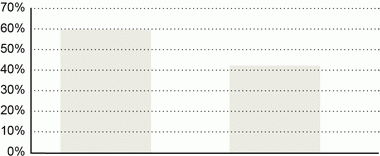
2013 real GDP growth
rate > 7.5% Hard landing:
2013 real GDP growth
rate < 6.0%
The big question mark in the minds of traders and portfolio investors is what happens beyond the soft landing; in particular, the much-debated "rebalancing" of demand away from capital investment and exports to consumption instead. "The switch from an investment driven economy to a consumption driven economy will be a work of engineering, of years, that it fraught with risk," observes Hutchings. "It will require balancing in terms of distribution of wealth and economic decision-making from the state to the private sector and the people at large, addressing inequality in wealth and developing a welfare system. More fundamentally, it will require breaking the nexus that is the combination of the party and the economy." In other words, Xi and Li will sooner or later have to undermine the political base of their one-party state in order to rebalance the macro economy. This is a tall order for any leader, elected or appointed.
Even the China bulls in our group have a distinctly limited time horizon. "All my long China bets are off in 24 months," according to one Connecticut-based trader. "In the next three to five years, I predict a two-thirds chance that China will experience a major economic dislocation," observes a London–based trader. "Financial assets in China are on a blow-out trajectory. Over the last six months, 20 trillion yuan ($3.2 trillion) of new financial loans were extended. The Chinese economy is generating less growth with greater levels of lending. The Chinese shadow banking system has taken over from the official banking system, the Peoples Bank of China is losing control. There is more and more investment chasing less growth, which is always a sign of a coming bust." The PBOC's recent liquidity tightening underscores the risks inherent in rebalancing.
Moving from economics to security, it was shocking to me that our Ditchley group assigned a one in five odds to a serious military clash between China and one of its maritime neighbors within this year. The mean Ditchley prediction was 19 percent with a standard deviation of 16 for a clash "involving loss of ships or planes, and more than 25 fatalities." One trader assigned odds of 60 percent to such an event, which would be a major blow-out for financial markets. The Institutional Investor poll put these odds even higher, at 22 percent.
It used to be my job at the CIA to make this kind of assessment, and then my job at the Pentagon to help prepare the military response if such an event did occur. I never assigned anything close to odds that high. This may reflect the many obstacles to good estimation of low frequency events that Nate Silver discusses in his recent book, The Signal and the Noise. If you don't make such estimates frequently enough to sequentially revise your forecast errors, it's basically a shot in the dark.
So I followed Silver's advice and recalculated the forecasts of the security events made by the Ditchley participants who had actually served in government at some point in time. Their mean forecasts of the ugly security events were usually much lower than those of the traders for the traditional security events — except for the possibility of belligerent actions by China and North Korea. There are few of the former events (strikes at Iran's nuclear facilities) and many of the latter events (North Korean military provocations).
For example, in an article for Institutional Investor in September 2011 ("Weighing Up the Risk as China's Power Grows"), I estimated the odds of two types of serious clashes in China's eastern seas: a small-scale collision of ships or planes, and a larger, bloodier clash involving the loss of a few dozen lives and a small number of vessels or aircraft. I noted that there had been 18 serious clashes in the South China Sea over the past 20 years, 14 small scale and 4 larger scale. I estimated the odds of another small-scale incident within the next decade as verging on "statistical certainty: at least 95 percent;" I put the odds of another large-scale event as "better than even — say, at 60 percent." The outside limit of my bet was 2020, not 2013!
I was also taken aback by the apparent inconsistency between pessimism on the ability of Beijing to manage its external border affairs and optimism about Beijing's ability to manage its internal economy, when in fact the two sets of policies are deeply connected. How can you assign a 20 percent chance of a major clash and also assign a 66 percent chance of a soft landing? A major clash in the South China Sea would cause major disruptions to the cargo ships that carry China's exports and the tankers that carry China's oil imports.
China's border management challenge — how to keep geopolitics from interfering with economic growth — is also reflected in the odds assigned to two other possible security events.
To the East, Beijing has to worry about North Korean belligerence interfering with two of China's biggest trading partners, South Korea and Japan. The mean forecast for another bloody-minded incident by the Kim Jong-un government was 14 percent by our traders, with standard deviation of 9. II judged the probability to be twice as high.
To the South, Beijing has to worry about a Pakistani military clash with India that could end in a nuclear exchange. India is also one of China's fastest growing trade partners. And despite its dismal economic performance, Pakistan continues to build more nuclear weapons. In fact, the farther behind India that Pakistan falls in terms of economic wealth, the farther the conventional military balance shifts in India's favor. In response, Pakistan relies even more on its asymmetric strategy of terrorist proxies like Lashgar-e-Taiba and nuclear weapons: not a very reassuring trajectory. Our traders assigned a 7 percent probability of an India-Pakistan nuclear exchange (standard deviation of 11), and the Institutional Investor readers came in very close.
Three Arrows and a Coin Toss
The Chinese leaders aren't the only government trying to focus on economic growth while nervously eyeing border problems. Japanese Prime Minister Abe has the identical problem. No less nationalistic than the Chinese, and with a hawkish track record on foreign policy, his clear priority is getting Japan back on a growth path. A border clash with the Peoples Liberation Navy in the Western Pacific would put Japan's growth at risk because China is also one of Japan's biggest trading partners.
Our Ditchley crew is almost evenly divided over his odds of reflating the economy, 52 percent to 48 percent (with a standard deviation of 23). II readers also rate it a virtual coin-toss, although they are slightly less optimistic at 46 percent to 54 percent.
Japan may be another case of the estimation problem. Just as no modern economy went through the two decades of deflation that plagued the country since the early 1990s, no major economy has tried to break the deflationary cycle in a big way.
"Abenomics has three arrows," says a Connecticut–based strategist. "Abe's fiscal plan is the first, Kuroda's monetary easing the second — and he hit the bull's eye on both. But spending more money and injecting lots of liquidity are the relatively easy parts. The third arrow, structural reform, will be the really hard part. That requires legislation, regulation, getting people to do things they wouldn't otherwise do. I'm looking to the success or failure of the structural reforms as the real test of Abenomics. That means we won't really know the answer for a year."
Symmetrical Geopolitical Risks on the Upside and Downside
Our traders and portfolio managers are less nervous that the Arab Spring will spill over into a supply shock that in turn will kick up oil prices. The mean prediction of no spillover has steadily risen from 52 percent in mid-2011 — almost an even bet — to 63 percent at Ditchley in mid-May. The Institutional Investor poll was slightly less optimistic, assigning odds of 45 percent that chaos in Syria could affect supply and thus drive Brent north of $100.
"I don't know whether this Syrian mess will get worse and spill over, and I don't really care, at least from a portfolio perspective," a London–based trader told me over a glass of champagne looking over Ditchley Park's long formal garden. "For a whole bunch of other reasons, Brent's not going above $100. Syria's just one coefficient in the equation."
Robert McNally, president of energy consultancy Rapidan, agrees with this calculation that the risks to the upside and downside of prices are offsetting each other. "There have been a lot of moving parts in the oil market recently, but they appear to have all canceled out. U.S. production has increased, but production in the rest of the world is down," says McNally. "Geopolitical risks are becoming symmetrical. There are now price-bearish geopolitical risks to crude oil as well as price-bullish risks. Spare oil production capacity still remains low, with some actual and threatened disruptions."
The most serious potential disruption isn't Syria, it's Iran, a point on which the traders and former diplomats at Ditchley agree. "There have been twelve significant oil crises in the past 50 to 60 years, and Iran has been at the center of three of them," says Shirin Narwani, a Middle East expert at the Oxford Institute for Energy Studies. "There is a general concern today that Iran will be the center of the next crisis. The lesser concern is that Iran will descend into internal chaos again or will intensify its role in Syria's proxy war. The greater concern is the outcome of an American or Israeli attack on Iran. This would in the short term lead to a halt in Iranian oil production and a disruption of traffic across the Strait of Hormuz, and it would cause panic in the oil markets given limited spare capacity."
Middle East Unrest
and Oil Markets
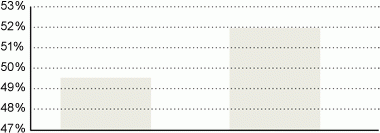
Brent > $100 No: Civil war in Syria does not spread beyond borders, no impact on oil markets: Brent < $100
All but one of the traders agreed that a strike on Iran would be bad news for oil markets. The mean forecast of a military strike by the U.S. or by Israel within 2013 was only 15 percent, with a standard deviation of 12; the highest prediction was 40 percent. The mean forecast of a compromise between the West and Teheran on the nuclear program was 27 percent, in contrast.
This means the most likely outcome, at least according to this group, is neither war nor peace in the Gulf. "What we have been seeing and will continue to see is stalemate," agrees Oxford's Narwani. "Iran is willing to negotiate on 20 percent enrichment, but in return wants some of the crippling sanctions against it reduced. But the sanctions have so far failed to deter Iran from its nuclear course. The country has lived under sanctions for decades and there is a national resignation to continued sanctions if necessary."
Rapidan's McNally is less sanguine. "From my discussions with Western officials, I think the U.S. and the U.K. perceive a much greater than 50 percent likelihood that Israel would undertake unilateral military action against Iran if it breached Israel's red-lines," he says. "For that reason, I see a 70 percent chance that an Iran-related risk premium will return to crude oil markets starting in late Q3 2013."
The Institutional Investor poll assigned odds of 32 percent of a military strike on Iran's nuclear program within 2013. The former diplomats and spies assigned odds of just 8 percent. Maybe everyone is taking a shot in the dark.
A pair of former senior diplomats and intelligence officers at Ditchley floated another potential security event related to energy that could roil markets in 2013: a clash between Israel and Turkey over the recently discovered natural gas fields in the Eastern Mediterranean. As a study by the International Institute of Strategic Studies ominously observed, "Among those to have issued assertive statements of intent regarding undersea gas finds are Greece and Turkey, Cyprus and the self-declared Turkish Republic of Northern Cyprus, as well as Israel, the Lebanese militia group Hezbollah and Palestine's Hamas."
The average bet by the Ditchley crew that such a clash could take place in 2013 was 9 percent, which I found surprisingly high. True, relations between Israel and the government of Prime Minister Recep Tayyip Erdogan were damaged by the Israeli naval attack on the Turkish ships in the 2010 "Gaza Freedom Flotilla," which killed nine Turkish citizens, and Ankara's response to the Syrian civil war has been increasingly militant, but otherwise I find the prospect of a real Turkish-Israeli clash over these gas fields extremely remote. II readers assigned one in four odds of such a clash in 2013; more shooting in the dark, in my view.
Yet I admit being completely taken by surprise by the speed and extent of the civil disorder in Turkey in June. As Teneo's Piccoli observes, "Turkey went from being an attractive emerging market underpinned by strong political stability to being caught in the eye of the storm, with anti-government protests causing bouts of weakness for its stocks, bonds and currency. As of today [18 June] Turkey has seen $1.35 billion of capital outflows from its equity markets since May 26 due partly to global market conditions and two weeks of domestic political unrest. The stock market is down almost 8 percent since this started."
So the world is full of surprises, and, from a portfolio manager's perspective, a large number of uncomfortable shots in the dark. Stepping back from the deep drivers, the average Ditchley prediction of one of the bad nine security events taking place within 2013 is just shy of 18 percent. That is almost a one in five chance that a bad news security event will take place, and any of these bad events will assuredly roil financial markets.
"If you really believe these odds, you'd be crazy not to buy protection on parts of your portfolio," mused a Connecticut–based macro trader. "But few people do. I don't. It's expensive, by and large, and the clients don't like to pay for the tail-risk protection. They want me to trade for them, not get insurance for them."
James Shinn is lecturer at Princeton University's School of Engineering and Applied Science (jshinn@princeton.edu). After careers on Wall Street and Silicon Valley, he served as national intelligence officer for East Asia at the Central Intelligence Agency and as assistant secretary of defense for Asia at the Pentagon. He is CEO of Teneo Intelligence and serves on the advisory boards of Oxford Analytica and CQS, a London–based hedge fund.




